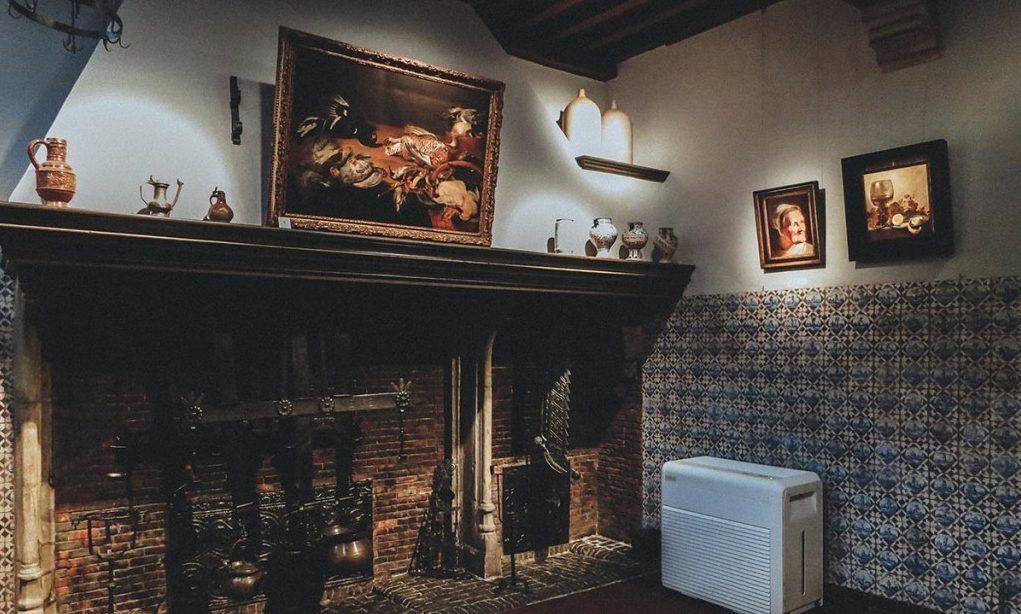The MateBook D 15 is still a competitive notebook in its class, even one year after its launch. It’s not built on the latest hardware platform and lacks certain features, like a backlit keyboard or USB-C port, among others, but it checks most of the other traits regular buyers would expect from a compact and affordable all-day laptop: it’s solidly built and lightweight, gets an IPS matte screen and decent speakers, performs well, runs cools and quiet, and lasts for a fair bit on a charge. Let’s find out the detail in Huawei Matebook D15 Review with Toptechslife!
Contents
Design & Construction

From the outside, the Huawei MateBook D 15 may look cheap, but it’s a different story once you get a feel of the laptop. The build is solid, with no flexing and creaking when pressing down or bending the laptop. The aluminum body has a smooth finish with a little texture to help users with grip. There are two colors available, Mystic Silver and Space Grey.
On the top, there’s a large Huawei branding sitting in the middle. The lid is flat, with no angles or curves.

Underneath there’s a protruding rubber foot that spans the entire length of the laptop towards the back and two smaller protruding feet at both sides of the front. There’s also a large intake grill, and two speakers are sitting on both sides.
Keyboard and trackpad
This MateBook D is a pretty good typer as well. The keys are made of hard plastic and are a little wobbly, but the layout is great, with large and properly spaced key-caps. There’s no NumPad section, but you do get an extra row of function keys at the right, which takes some time to get used to, but will be useful once you do.
The deck’s sturdiness, 1.5 mm of travel and overall bouncy click add up to that alright typing experience I mentioned earlier. However, the actuation is a little weird, as the keys need to be pressed firmly to register clicks, which can lead to inaccuracies when typing quickly. Most people should find this OK, though, especially if not used to the shorter-stroke of current ultraportables.

This keyboard is also quiet enough that it won’t draw attention at the library, but it lacks illumination, so using it in the dark might will be a challenge. Huawei did include a Caps-Lock indicator, which most other keyboards in this segment lack.
The clickpad is a bit on the small side for a 15-inch laptop, but it works fine with everyday use. It’s a smooth plastic surface with Elan hardware and Precision drivers, and my only real gripe with it is the fact that it rattles loudly when tapped in the lower half, which is, in all fairness, another common flaw of budget notebooks.
Screen
There’s a 15.6-inch screen on the VivoBok S530, with a matte finishing and fairly narrow bezels, especially on the sides, as well as enough room for a webcam and mics at the top.

Huawei went with an average quality panel, pretty much on par with what the others offer in this class. The AU Optronics panel offers good viewing angles and contrast, but is not very bright and only covers 51% of the AdobeRGB gamut. Detail below, taken with a Spyder4 sensor:
- Panel HardwareID: AU Optronics B156HW02 (B156HAN02.1);
- Coverage: 67% sRGB, 48% NTSC, 51% AdobeRGB;
- Measured gamma: 2.8;
- Max brightness in the middle of the screen: 232 cd/m2 on power;
- Contrast at max brightness: 720:1;
- White point: 6900 K;
- Black on max brightness: 0.32 cd/m2;
- Response time: ~28 ms BTW;
- PWM: No.
Our sample came poorly calibrated out of the box, so you should definitely use this calibrated profile to address some of the gamma and gray-level imbalances.
Performance
Having updated the MateBook product range with AMD’s Ryzen 5 2500U CPUs, Huawei goes one better by switching to the AMD Ryzen 5 3500U. The performance has increased significantly and is now sufficient not only for simple office tasks but also for occasional image-editing.
The AMD Ryzen 5 3500U is a four-core, eight-thread processor, which offers higher clock speeds at the same TDP than its predecessor Ryzen 5 2500U. The base frequency is 2.1 GHz and the boost frequency is 3.7 GHz. How long a CPU can run at its full speed depends in large measure on the cooling solution.
Our Cinebench R15 stress test reveals that Huawei has put in a lot of work here. In the multi-core section, the CPU not only outperforms all other laptops with the same processor but also manages to run at full speed for the entire duration of our stress test. The performance also does not drop when running on battery power.


